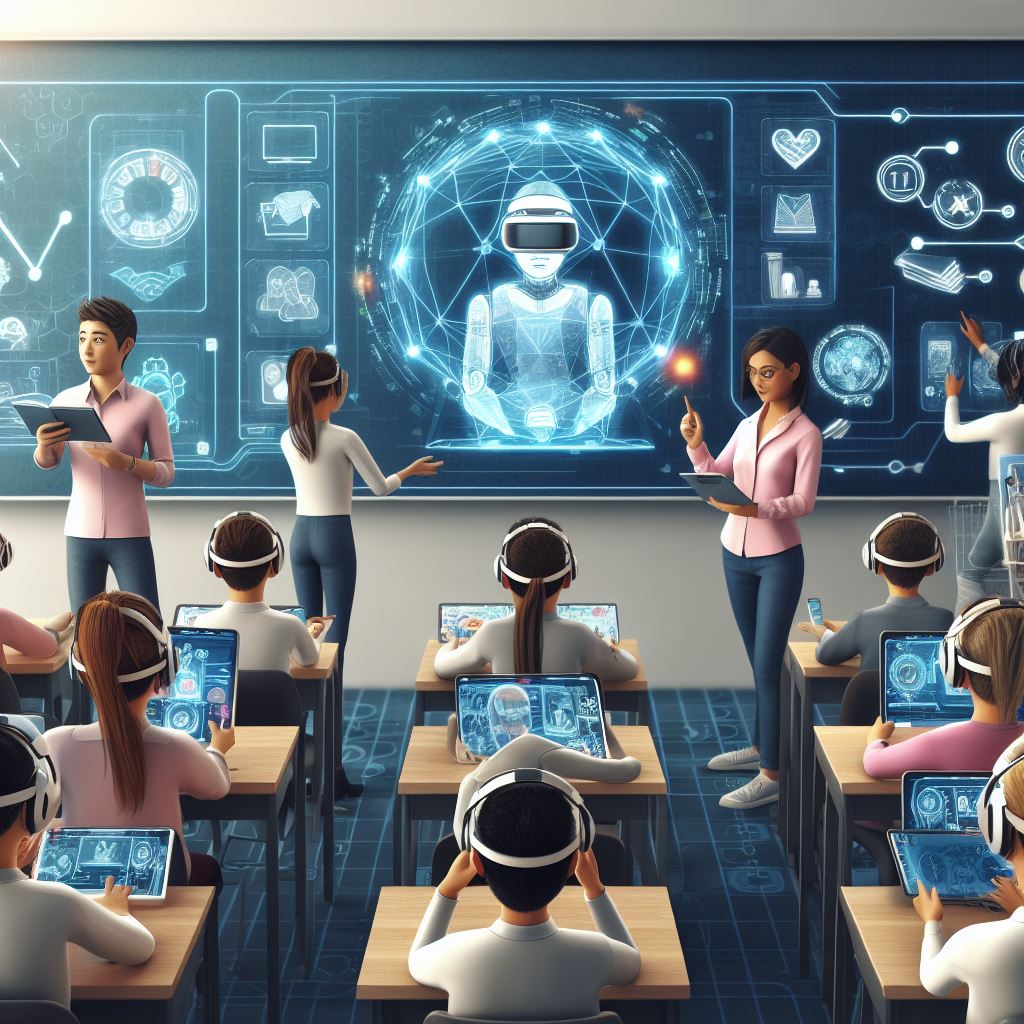
The education landscape has been dynamically evolving, prominently weaving technology into the tapestry of teaching and learning methods. In the crucible of educational development, technology has steadily emerged as a powerful ally in adapting to students' multifaceted learning styles and preferences.
A key endeavor within this landscape involves utilizing technology to appropriately address these myriad learning propensities, crafting a more inclusive, personalized, and efficient educational environment.
1: Recognizing the Spectrum of Learning Styles
-
Visual Learners: Often prefer using images, maps, and graphic organizers to access and understand new information.
-
Auditory Learners: Learn best through verbal lectures, discussions, talking things through, and listening to what others say.
-
Kinesthetic Learners: Prefer to learn by experiencing or doing things physically.
Howard Gardner's theory of Multiple Intelligences (1983) further expands the horizons, acknowledging spatial, musical, intrapersonal, and interpersonal intelligence, among others. Catering to many learning styles mandates a robust, adaptive, and technology-driven approach.
2: The Confluence of Learning Styles and Educational Technology
In aligning "educational technology" with various learning styles, several facets come into play:
-
Personalized Learning Environments: Tailoring educational content according to individual learning needs and preferences.
-
Adaptive Learning Technologies: Technologies that adapt in real-time to the learner’s behavior and performance.
-
E-Learning Platforms: Various "e-learning platforms" cater differently to learning needs, offering diverse content formats and interactive modules.
Platforms like Khan Academy are prime examples of technology accommodating diverse learning strategies. Their personalized learning dashboard allows students to learn at their own pace, providing an array of resources like practice exercises and instructional videos and a personalized learning dashboard that empowers learners to study at their own pace inside and outside of the classroom.
3: Echoes from the Real World: Case Studies and Success Stories
A case in point is using the “Flipgrid” platform, an app that allows teachers to create grids of short discussion-style questions that students respond to through recorded videos. This platform supports auditory and visual learning and bolsters spatial and interpersonal learning by facilitating a digital interaction space for students.
Furthermore, platforms like Blackboard Learn and Google Classroom, widely adopted across numerous educational institutions, mirror a commitment to fostering a digital learning environment that flexibly accommodates varied learning methodologies, thereby championing "personalized learning."
4: Challenges and Limitations
While technology paves the path toward diversified and inclusive learning, it isn't without its hurdles:
-
Accessibility and Equity: Ensuring all students have equal access to technology.
-
Technical Issues and Learning Curve: Addressing technological glitches and ensuring educators and students are proficient with new tools.
-
Engagement and Distraction: Striking a balance between utilizing technology and ensuring it doesn’t become a source of distraction.
5: Expert Opinions and Insights
Experts in the educational technology realm highlight the pivotal role of technology in bridging the gap between varied learning styles and educational content delivery. According to Dr. Patricia Fioriello, an advocate for e-learning, "Using technology to cater to individual student needs" is indispensable in an era progressively dominated by digital natives. Moreover, studies such as Pashler et al. (2008) emphasize that acknowledging learners' preferential modalities and adapting teaching strategies significantly bolsters educational outcomes.
6: Charting the Future: Trends and Projections
In perceiving future trajectories, several themes and trends surface:
-
AI and Machine Learning: Employing artificial intelligence to facilitate more robust adaptive learning systems.
-
Immersive Technology: Exploiting VR/AR for an immersive learning experience, ensuring more realistic and engaging learning materials.
-
Learning Analytics: Leveraging data to enhance personalized learning experiences.
Embracing those above, the educational paradigm is progressively shifting towards a more tech-centric model, albeit amidst various challenges that necessitate strategic navigation.
Conclusion
In the alchemy of education and technology, a potent elixir to cater to students' varied learning styles is perpetually being refined. While successes and milestones are discernible, the journey is permeated with continual learning, adaptation, and evolution, forging ahead toward a future where education is not just universal but uniquely personalized, accessible, and optimally aligned with every student’s intrinsic learning style.
In conclusion, by converging adaptive and personalized learning pathways via technology, the educational ecosystem can become a bedrock where each learner finds their rhythm, pace, and trajectory, culminating in a more holistic, inclusive, and equitable learning environment.
Education Future Education




